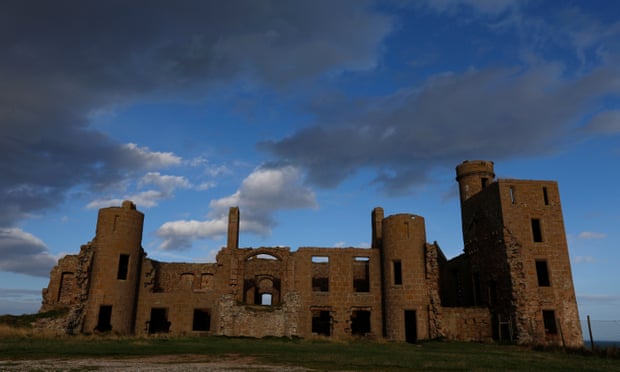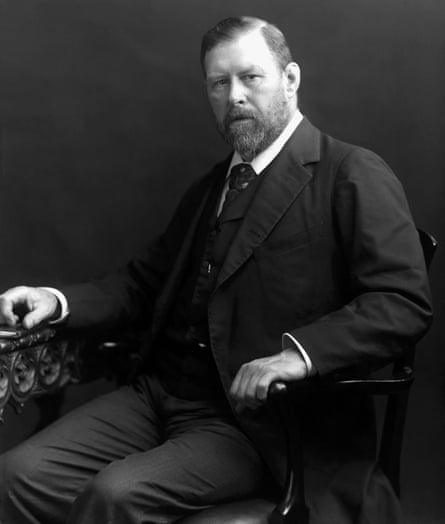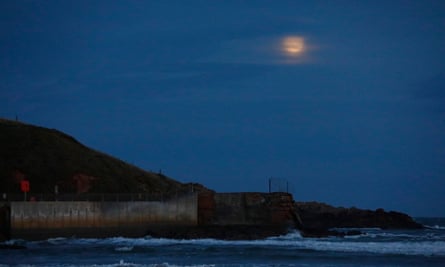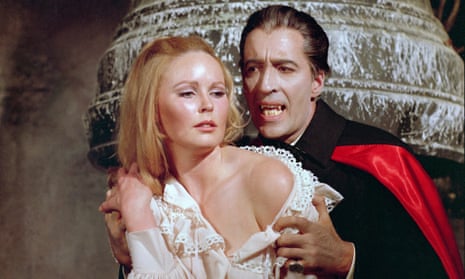Author’s method acting approach to writing terrified local people in Aberdeenshire as he perched on the rocks like a bat.
In August 1894, at the end of a month-long stay to research his embryonic novel, Bram Stoker wrote in the visitors’ book at the Kilmarnock Arms on the Aberdeenshire coast that he had been “delighted with everything and everybody” and hoped to return soon.
According to new research, though, the feeling was not entirely mutual. Stoker, a genial Irishman usually known for his cheeriness, was experimenting with what would become known as “method acting” to get under the skin of his new character, one Count Dracula. Local historian Mike Shepherd, who has spent seven years researching Stoker, says the author’s links with the London theatre inspired Stoker to try inhabiting his character in a different way.
According to his wife, Florence, everyone – including the hotel staff, and the locals – was frightened of him. He “seemed to get obsessed by the spirit of the thing,” she later said. He “would sit for hours, like a great bat, perched on the rocks of the shore, or wander alone up and down the sand hills thinking it all out”.
Now Shepherd hopes his discoveries will make more people aware of the influence of Aberdeenshire in Dracula’s development which, he says, has never been widely appreciated. And later this month the area’s first-ever Festival of Darkness gets under way, focusing on how this remote corner of Scotland helped shape the world’s most famous vampire story.

Shepherd, who has used hotel registers, letters, press cuttings, telegrams and interviews with local people whose parents and grandparents remember Stoker’s visits to piece together the story, believes the author deliberately pinpointed Cruden Bay, north of Aberdeen – then called Port Erroll, a small fishing village with a sandy beach and a windswept cliff-top fort named Slains Castle – as a retreat where he could concentrate on his writing.
“Writing was a part-time job for him: his main work was at the Lyceum Theatre in London, where he worked with the leading actor of his day, Henry Irving,” says Shepherd. “The theatre closed in August, and Stoker decided to find somewhere far away from London where he could concentrate on his writing projects. He knew he wanted somewhere with bracing air, on the east coast: in 1892 he got the train to Peterhead and searched along the coast, and found exactly the place he’d been looking for.”

Across many summers thereafter, Stoker returned with Florence and their son, Noel. Sometimes they took a cottage, but several times they stayed at the oak-panelled Kilmarnock Arms in the centre of the village. Earlier this year, those visits were commemorated with a wall plaque unveiled by Dacre Stoker, great-great-nephew of Bram. Stoker started writing his most famous novel while staying in the village in the summer of 1895.
Shepherd has discovered that Stoker’s approach to getting inside the character of the Count owes much to a form of method acting tried by Irving. In 1906, in a book entitled Personal Reminiscences of Henry Irving, Stoker wrote about the importance Irving – and he – had attached to “passing a character through one’s own mind”, and also reported that Irving had been complimentary of Stoker’s own use of the method of inhabiting a character. “This was an early form of method acting, and Stoker used it to get under the skin of Dracula,” says Shepherd.
Most people associate Stoker’s vampire with two places: the Yorkshire town of Whitby, and the central Romanian region of Transylvania. But though in the book Dracula is from Transylvania, Stoker never visited there; and while three chapters of the book are set in Whitby, the author is only known to have gone there once or twice.
Meanwhile, says Shepherd, Stoker made 12 or 13 visits to Aberdeenshire, staying up to a month at a time. The book is infused with the spirit of the area. “For Stoker, Aberdeenshire stood in for Transylvania,” he says. The festival will put the spotlight on how the area inspired Stoker, with screenings of movies based on the story taking place in buildings associated with Stoker’s trips.

“There have been hundreds of movies made about the Dracula story, and we’ve chosen eight that connect particularly to this area,” says the festival’s director, Marie Archer. “One of the screenings – of the first Dracula talkie, made in 1931 – will be in the village hall at Cruden Bay where Stoker once gave a lecture.”
In Aberdeenshire, Stoker found a community that connected with pagan as well as Christian beliefs. “This was part of the Dracula story, and it was very real to the fishermen of Cruden Bay. They held on to ancient pagan traditions as well as fervent Christianity, and they still do,” says Shepherd.
He believes Stoker found, in Scotland, people who connected with folklore in a similar way to the Transylvanian communities he was researching. “Aberdeenshire felt a lot more real than his other life in Chelsea – that was all about socialising and soirées. Florence loved it but I think it bored Bram – he preferred the rugged reality and wilderness of Scotland.”
Other links in Dracula to the area include mentions of the local Doric dialect. In chapter six, Stoker has an old fisherman tell Mina he wouldn’t “fash masel” about a local superstition, meaning that he wouldn’t worry about it. And Slains Castle, a 20-minute walk from the village, features an octagonal room like the one described by Stoker in Dracula’s castle – an internal room “without a window of any sort”, lit by a single lamp. Today Slains is a ruin, but it was inhabited in Stoker’s day, and Shepherd has a photograph of the room at the time.
Bram Stoker died in 1912, but his death didn’t end his widow’s association with Cruden Bay. A few months later she contributed two recipes to a book compiled by parishioners at the village church. One featured slices of ripe tomatoes interleaved with slices of ripe plums, dressed with oil and vinegar. Its name: Dracula Salad.
The Festival of Darkness runs 21-30 October, see neatshows.co.uk/festivalofdarkness

Written by: Joanna Moorhead, for The Guardian